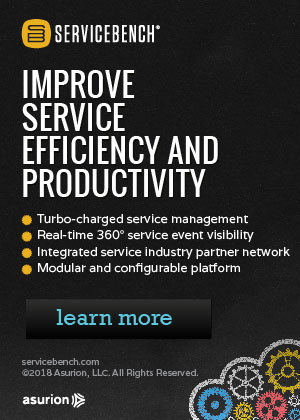October 12, 2005 |

|
ISSN 1550-9214 |
Warranty Report:A white paper commissioned by Microsoft finds that the auto industry needs better communications and collaboration tools to reduce warranty costs.The first of several warranty-related white papers funded by Microsoft Corp. and published by the Center for Automotive Research (CAR) has arrived, and in its eight pages it corroborates several beliefs many warranty industry professionals already held. Entitled "Warranty Best Practices: Center for Automotive Research -- Microsoft Study on the Automotive Industry, Volume 1," the white paper makes a compelling case for better communications and better use of existing warranty data.  A person could wonder what Microsoft is doing in the world of warranty as a potential vendor, given its presence in PC operating systems and office applications, but its absence from anything resembling warranty software. But that overlooks the simple fact that Microsoft may already be the dominant warranty software supplier, if one broadens the definition to include products such as Excel, which is widely used as a low-end claims analysis tool. In fact, for many automotive manufacturers, compliance with the US government's TREAD Act has been reduced to quarterly uploads of XLS-formatted spreadsheets. The white paper opens with a "Dear Industry Executive" letter from Kyle Solomon, worldwide industry director, Microsoft Automotive & Industrial Equipment. In that opening letter, he states, "If you've stored away a few million warranty claims but are struggling over how best to use the data they contain to improve your operations, you have plenty of company in the maintenance shop." He then explains why Microsoft commissioned CAR to perform these auto industry studies over a period of four years, and why warranty was selected as the first topic. He then includes a slight plug for Microsoft's Peak Performance Initiative, of which improved warranty is a component, and then he urges readers to send him a few thoughts about the report. Leave it to Microsoft to assume that everyone has email, and everyone has an Adobe Acrobat PDF document reader. But really, the group of automotive warranty professionals this report is directed toward probably do all have email, and it's probably Outlook and/or Microsoft Exchange Server email. And though they'll need Adobe's PDF reader, it's probably going to be installed as a plug-in for Microsoft Internet Explorer running atop some flavor of Microsoft Windows. Yes, there may also be some Apple or Unix out there on the desktop, but chances are good that better than nine out of ten white paper readers will already be Microsoft software users. Enough Data, More CommunicationsMicrosoft's and CAR's overriding theme in this report seems to be that while there's enough warranty data -- maybe too much data, in fact -- the bigger problem is an inability to communicate and process that data. "It's not about getting more data. It's about sharing this data in a common fashion," Solomon told Warranty Week. "At the end of the day, around this warranty issue there is a ton of disparate data that is disconnected," he said. To combat this, he said Microsoft is putting together a "prescriptive architecture for early warning." It will take full advantage of the Microsoft software already in use within the vehicles, the dealerships, the suppliers, and the OEMs themselves. "It's about leveraging that presence, but it's also about leveraging open industry standards to drive interoperability, to get access, and to share this data." As far as open industry standards, Solomon said Microsoft is looking at Web Services as well as the Extensible Markup Language (XML) for use in warranty analysis. For instance, he envisions a Web Services application that allows a warranty analyst to not only look at the different parts of an automobile and their suppliers, but also to connect with the claims databases of those suppliers. He's also hoping that the Automotive Industry Action Group's Early Warning Standards initiative bears fruit in the form of document and communications standards. Of course, Microsoft also has its own product to help in this communications and collaboration effort. Besides Excel and Office, it also sells Windows SharePoint Services, BizTalk Server, and .Net. In the near future, SQL Server will be fitted with some of the text mining utilities that others currently sell separately. And, we get the distinct suspicion that something more overtly warranty-oriented is in store for Excel. Solomon pointed out that one person interviewed for the study said not a day goes by when he isn't pitched some high-performance analysis tools. But he turns them all down, because what he really wants is something that bolts onto Excel -- something his warranty analysts already know how to use. "It's all about interoperability," he said. "It's about connecting all those high-performance engines in the background, and leveraging things such as the data mining capabilities that is going to be in SQL Server 2005, which is coming out in November, to be able to look for trends and patterns in the data, and put it into an easy-to-use tool such as Office." Consumer Applications to Become Business Tools?Solomon added that a few companies are already beginning to use the "blogging" features of MSN as a way to track product issues and customer satisfaction trends, and said he expects this also to eventually become input for the data mining engines. Who knows? Maybe someday instant messaging technology will make the transition from teen to technician? It's not inconceivable that what is now considered entertainment software for children will someday become a business tool. After all, that's how the Internet grew up. The report suggests that the heart of the problem is a lack of connectivity. For instance, one of the big problems is the transposition of data that occurs when a mechanic's report is converted into the warranty codes that will result in a payment for the warranty work they performed. That's fine for the clerks who process the paperwork, look for mistakes or fraud, and approve or deny the claim. But wouldn't it be better if the people analyzing warranty data from a product engineering angle also had access to the mechanic's report? Then there's the still-emerging area of data that actually comes from the vehicle itself -- from its computers and other electronic components. Privacy advocates are already bristling at the thought of this data being used to assign blame and liability in traffic accidents. Now imagine if the engine turned you in for abuse, allowing a manufacturer to deny your warranty claim because you continued to drive as smoke or steam bellowed out of the vehicle. However, such a rich source of data might also help a warranty analyst narrow down the cause of a failure, and might help an OEM prove its case to a parts supplier. It also might help an engineer make a modification that will greatly reduce the problem in the future. In many respects, the dealers, technicians, suppliers, and manufacturers are already making the transition from mechanical to electronic, sometimes downloading fixes and patches instead of replacing parts. After a while, it starts to sound like the infrastructure that already surrounds Windows, Office, and Internet Explorer, which already use service packs and software patches to improve security, fix bugs, and add features. It's not so much that Microsoft is becoming an automobile manufacturer as it is that the OEMs are becoming software developers. Take what Microsoft did with LANs and workgroups in the 1990s, change a few labels, and what you have is a communications/collaboration backbone suitable for the automotive supply chain. Hands-Off ApproachBrett Smith, the assistant director of manufacturing engineering and technology for CAR and one of the white paper's co-authors, said Microsoft in no way influenced the conclusions of this report. "Microsoft was extremely hands-off on this work," he noted. "They had nothing to do with the questions. They certainly pushed us towards warranty, but they had nothing to do with how we asked the questions. In no way was this aimed to try to make it look like Microsoft should win here." Still, even after dictating to Warranty Week that disclaimer, Smith noted that several of the respondents said what they needed most were better communications and collaboration tools -- exactly the kinds of products Microsoft is known for. The message he heard loud and clear was that they need better communications not only between their own finance, statistics, and quality groups, but also between dealers, manufacturers, and suppliers. "With the work we do, we have to be very careful that we never become proponents of the research funder," Smith said. "But time and again, people told us, 'Microsoft can play a role here.' And that was without us in any way pushing for that." Not every warranty software vendor is likely to be pleased with the white paper's findings, however. The report suggested that OEMs can make good use of text mining technology to extract meaning from the reams of paperwork they receive from dealer repair shops. However, Smith noted that two suppliers said they haven't yet found text mining to be a cost-effective technology. One was a very large supplier that could afford it but chose not to buy, while the other was a smaller supplier that probably couldn't afford it. Both said they found the technology somewhat useful, but not enough to justify its current cost. Cost vs. QualityIn another section of the report, the CAR researchers recounted how a supplier once told an OEM their parts were more expensive because they were of superior quality. Therefore, the parts would prove to be more durable, and would result in lower repair costs over the life of the vehicle. The OEM went with a lower-cost supplier, purchasing saved money in the short run, but warranty costs spiked in the long run. "There's a pendulum that swings in Detroit with regards to purchasing," Smith suggested. "Over the last five years it has been an extreme purchasing bias, meaning the low-cost component wins. We've seen Chrysler over the last several years, swing back towards the understanding that there are costs necessary for quality parts." He said that trend may now be spreading to GM, which just recently announced its intent to change its purchasing strategy in a way that emphasizes quality over cost. "Ford, I'm sure, will do the same thing," he added. Solomon said he sees a similar trend. The brand owners have more or less fixed the claims processing problem. Now they want to put the data they collect to better use, earlier in the product development cycle -- the so-called early warning strategy. The success of those efforts will require better connectivity not only with the mechanics and dealerships, but also with the Tier 1 suppliers and with their suppliers. That in turn will make it easier to trace failures to their source, and to then look at cost not only in terms of the initial purchase price, but also over the life of the product. "I think the suppliers are now beginning to sense that pressure of moving from initial product quality to durability, where they're being held liable to longer-term commitments. It's interesting. When we talk about warranty, a lot of the suppliers say they really don't have a warranty issue. But when we talk about long-term quality, durability, and traceability, that's where the conversation begins," Solomon said. Automotive ComputersIn the headlines section of Warranty Week, news items abound concerning new vehicle telematics systems, primarily in regards to how they complicate warranty work. As the on-board computer takes over more and more functionality previously handled mechanically (does anyone remember distributor caps?), more and more warranty claims are turning into computer repairs. One wonders whether perhaps GM and HP should merge, or perhaps Microsoft should make a bid for Motorola's automotive business? All speculation aside, it does seem likely that both auto and PC makers will be facing similar service and repair challenges in the coming years. "Out of all the things we looked at, I think that [electronics and telematics] is the most intriguing," Smith said. "It's also the one that potentially offers an incredibly huge burden for this industry. For all the electronics on the market, there are so many untested potential interactions -- hundreds of thousands of potential interactions. I've been told by product development folks that they can't test all of them. And they don't know what they don't know. Time doesn't allow them to test and model all of the interactions. And frankly, the customer will model and test them all. Then we'll find out if there are glitches." Smith said mechanics who already struggle to diagnose and fix intermittent mechanical problems identified by the customer will have an even tougher time trying to fix what essentially boils down to software problems. "There is so much electronics in these vehicles, and more going in every day," he said. "Mechanics on the shop floor understand the mechanical world. The mechanics don't understand the electron world. When the electronics stop working, it becomes a real burden for them to fix, and for the entire value chain to understand what needs to be fixed." Solomon said Microsoft is already working with at least one OEM to help mechanics with the electronics. "Certainly, with our announcement of the deal we made with Fiat," he said, "there has been traction in that space. One of the things they're focusing on is that service experience. By having that standardized platform across all of their products, they can now provide their dealers with some degree of access to the on-board computers." The Next White PaperThe topic of the next CAR-Microsoft white paper will be announced early next year, followed by a third report, probably on a topic surrounding early warning, scheduled for publication next summer. Solomon said customers have asked for more study about early warning and how manufacturers can put existing data to use earlier. He said they also want to see more study about traceability issues, for instance how with better tracking of parts and their "born on" dates, the scope of a recall can be cut from hundreds of thousands of vehicles down to possibly just hundreds. "There are a lot of issues wrapped up in this warranty topic. There are quality issue. There are traceability issues. It's a major area that we looked at and found we could certainly add value, because the base problem is collaboration," Solomon said. | |||||||||||||||||||||||||||||||||||||||||||||||||||||||||||||||||||||||||
| |||||||||||||||||||||||||||||||||||||||||||||||||||||||||||||||||||||||||







